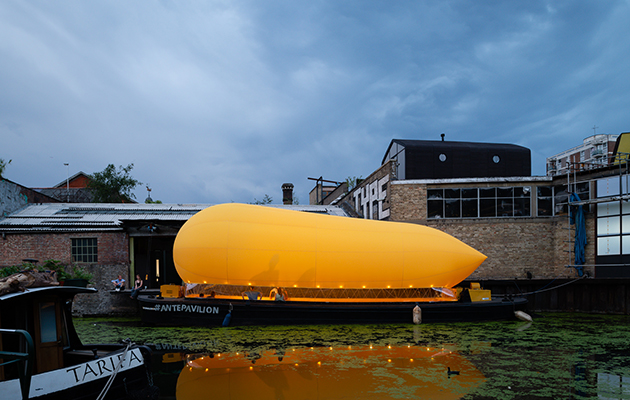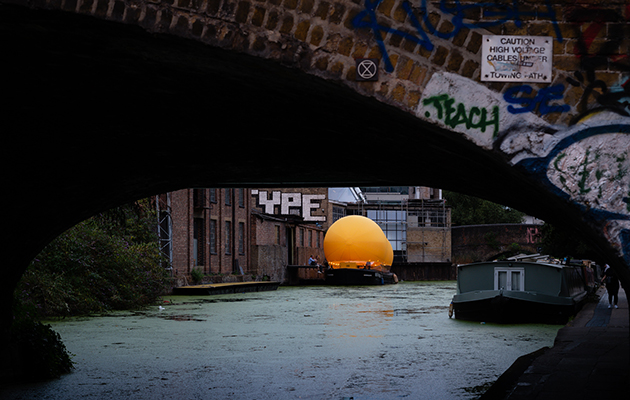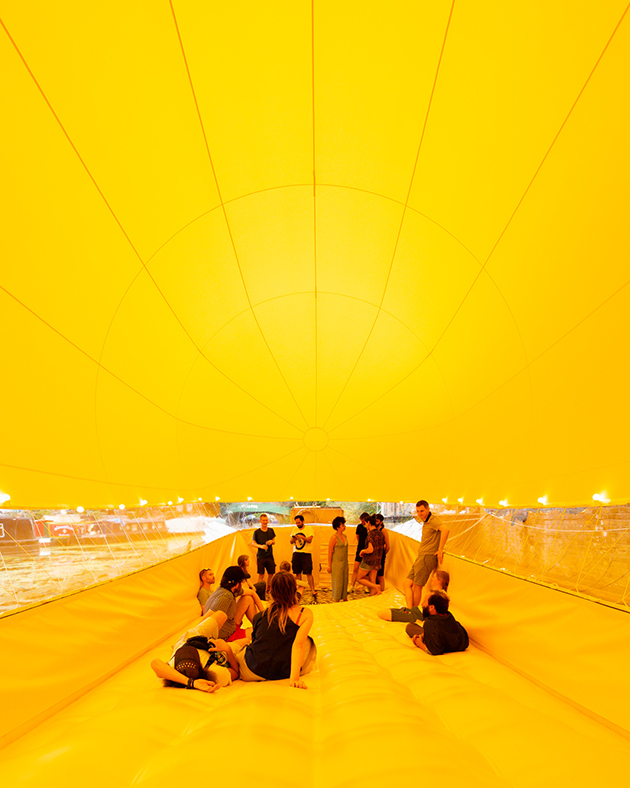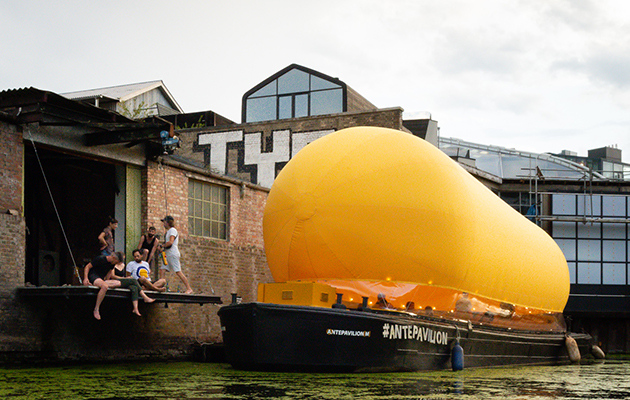
The second edition of experimental Antepavilion series is huge, yellow, inflatable, and has taken over a canal, writes Joe Lloyd
If you go down to the Regent’s Canal in Haggerston today, you’ll be confronted with quite the sight: an enormous, inflatable yellow structure atop a 19th century barge. Resembling at turns a banana-hued zeppelin and a humongous squash, its beaming colour leaps out from the canal’s predominantly grey-brown surroundings, a dash of sunlight even on a damp London morning.

This is AirDraft, a pavilion by the architects Thomas Randall-Page and Benedetta Rogers. It is the second experimental structure created as part of the annual Antepavilion series, run by restoration-focused developers Shiva and the Architecture Foundation, following last year’s rooftop airduct-shaped pavilion by PUP Architects. It is currently moored at the Hoxton Docks, a canal-side assemblage of workshops and artists’ studios.
AirDraft, chosen from a shortlist of five, which in turn was whittled down from 132 entries. This year’s competition asked architects to propose a structure for Ouse, a historic cargo vessel. ‘As much as canals changed London,’ say Randall-Page and Rogers, ‘London’s canals have changed, from conduits of industry and cargo to arteries of art, culture and leisure.’ Crowning a piece of mercantile history with a space for performance and reflaxation, AirDraft acutely enacts this shift. 
From Saturday 11 August, AirDraft will commence a series of journeys down the canal, alighting at several local venues over eight nights. There will be spoken word and music at Grow Hackney, operatic performance at the Rosemary Branch theatre and improvised comedy and swing dancing at the Constitution pub in Camden, before a final pair of gigs at Granary Square. ‘I’ll be interesting to see how its acoustics work out,’ remarks Rogers, ‘we’ve already had an opera singer over to test it.’
The complexities of this programme informed the design. ‘Having the boat,’ explains Rogers, ‘gave us quite a lot of constraints, but also opportunities.’ Accessed through the vessel, AirDraft has an inflatable roof, floor, and sides, allowing for up to 30 people to recline in comfort. A recessed, hard-floored area at one end serves as a stage, while a transparent window running across the pavilion’s sides brings in light. When visited during a shower, it muffled the sound of the rain to pleasant background murmur.
By choosing inflatables as their medium, the architects were able to facilitate their structure’s mobility. ‘When the membranes are deflated,’ says Rogers, ‘we can move under even the lowest bridges on the canal.’ After Rogers and Randall-Page designed AirDraft, it was fabricated in Bristol by Cameron Balloons – specialists in hot air transportation – before being assembled in London over the past week to prepare for its launch.

Both as a comment of on the history of London’s canals and a reimaging of the pleasure barge, AirDraft is a vessel well-worth embarking.


















